In the first of a series of blogs, we explore the What, Why, How, When and Where of our key services. This month, we look at Airport Capacity Planning and Assessment. …Continue reading…

News
Continuing our great work at London Heathrow
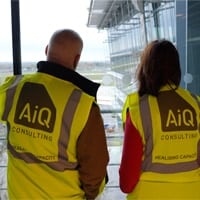
We are pleased to announce that our contract providing Airside Operations Simulations for the whole of Heathrow Airport has now been renewed for the second year running. …Continue reading…
Meet Our AiQ Team – Director – Adrian Todd
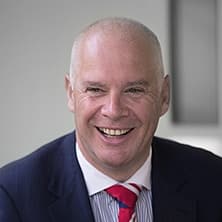
Welcome to the next in our series of posts ‘Meet our AiQ Team’. This week we would like to introduce you to Adrian Todd, one of our directors. Adrian is responsible for overseeing the business and leading our very talented team, both working on the ground at our airports, and behind the scenes.
What is a typical day like at AiQ?
New GMR Hyderabad International/Rajiv Gandhi International Airport Contract
As part of a joint submission under GTA, supported by both ourselves and Airport Design Consult Ltd, we were very pleased to be awarded the contract to augment the capacity of Passenger Terminal Building of Rajiv Gandhi International Airport (RGIA).
This project explores how the existing terminal can be upgraded to provide additional capacity, develop measures to increase capacity on a short-term basis and assess the capacity of the existing baggage handling system, determining what additional capacity is needed.
Rajiv Gandhi International Airport is presently owned, operated and maintained by GMR Hyderabad International Airport Limited (GHIAL).
Meet Our AiQ Team – Management Accountant – Rachel Mannering
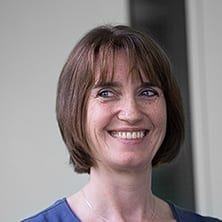
In our series of blogs ‘Meet our Team’, we talk to Rachel Mannering, our Management Accountant about her role with AiQ. …Continue reading…
Meet Our AiQ Team – Managing Director – Derek Allen
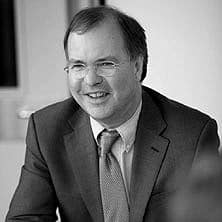
Derek is our Managing Director, overseeing the business on a non-operational level. In the next part of our Meet The Team series we talk about what he brings to AiQ and the next steps for the company. …Continue reading…
Walking you around the Walkabout
One of the highlights of our days is the walkabout – taking time to travel around the airports we work in to collect data, view airside layout changes and take time to talk to stakeholders.
We do official ‘walkabout’s (surveys) of Heathrow once every quarter – This is where we assess the whole of the airport to see what has changed and collect relevant data. It may be that car parking allocations have altered, a temporary building has been erected or a construction project has taken some land – this may cause problems if we have targeted this space as possible land to solve a capacity problem!
Providing Services to Consultants
Are you looking for airport consultants or airport capacity planners who can cost effectively deliver and work efficiently with your team?
We are happy to provide our services to other Consultancies where they lack the resource, specific knowledge or the tools to get the job done quickly and efficiently. This includes multi discipline engineer consultants and project managers working in the aviation industry, amongst others.
We have many years experience in working with airport consultant’s engineers and project managers, solving airport capacity problems quickly and innovatively.
What are the benefits in working with AiQ?
- We work as an extension of your existing team – making you more competitive.
- We are airport consultants and can communicate with all stakeholders effectively at every level, taking the pressure off your team.
- We can clearly present solutions using our bespoke simulation tool, Transvision AiR, to clearly demonstrate and prove your proposed change or solution to stakeholders.
- Using Transvision Air, we can predict and schedule the impact of your planned change.
- We have the practical attitude, intelligent solutions and excellent consulting skills to give you the confidence and peace of mind that we can deliver any stakeholder capacity challenge.
- Using our airport expertise, we:
- optimise facilities and equipment,
- reduce congestion and waiting times,
- improve passenger experience.
Find out more about our Services, or contact us today for further information.
Heathrow Terminal 2 Opens – Successful completion of the AiQ MUP Planning Contract
Following a lot of hard work by all involved, Heathrow’s new Terminal 2 opens this week.
Described as an extraordinary new space in its own right, it has been “designed from the outset with the needs of the individual passenger at its heart and with sustainability as a guiding principle.” (www.heathrowairport.com)
Moving partner airlines closer together to improve flight connections and passenger experience was central to the vision behind this amazing new terminal, and AiQ were part of the team to make that happen.
We were awarded the contract for Terminal 2 MUP Planning in February, as part of our work for MACE. This involved creating live allocation plans for the make up for Terminal 2 in preparation for the opening. Revised schedules, airlines moving from T3 to T2, and ground handler contract changes, all added to the challenging conditions. Requirement to use the older T1 baggage systems to service the new T2 baggage systems, constraining makeup resources, was also a key concern.
Our expert knowledge of airport operations, capacity planning and stakeholder management ensured that the project was completed and extremely successful.
We coordinated with the ground handlers and all operational elements, including the Aviation Business Continuity Consultancy who ran and managed the actual trails. We also worked with the Baggage Handling Systems department of Babcock International, Menzies Aviation and United Airlines handling.
As well as designing and co-ordinating the project in the run up to the opening of the new Terminal, we were also present on the day of the trails, which were very successful.
We were honoured to be part of such a ground-breaking vision of airport capacity and efficiency, and look forward to more projects with Heathrow in the months and years to come.
To find out more about our work with Heathrow, read our case studies or contact us today.
AiQ – How do we work?
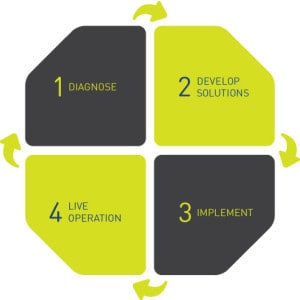
AiQ delivers expert consultancy services, tailored to individual client’s goals and capacity requirements. We diagnose, develop solutions, implement and oversee live operation as part of our service.
Using our process model, we follow each of the elements in all our operations to ensure we solve airport capacity problems quickly and innovatively, giving peace of mind to our clients.
Diagnose
We create clear and concise brief response based on our experience and expert knowledge. Understanding the high level goals and detailed requirements driven by technical efficiency, safety, security and environmental sustainability, we identify the cause and nature of any capacity problem in Airports swiftly and efficiently.
Will growth wait for the airport debate?
A few weeks ago Colin Matthews, the Chief Executive of Heathrow, wrote in the Telegraph about how the airport, and the UK’s export trade, is missing out on connections to growth regions while the debate about airport expansion rumbles on.
“To meet its potential, Britain needs to be connected with the regions where growth is surging ahead – and that means emerging markets in Asia, Latin America and North America…. Instead, Heathrow has been full for a decade and those routes are being handed to our hub rivals in Paris, Frankfurt and Amsterdam. Previous analysis shows our economy is missing out on £14bn a year in lost trade as a result, a figure that’s set to rise to £26bn by 2030.”
He argues that debate is centred around a ‘false choice’ – Heathrow or Gatwick, where in fact both airports have different roles within the UK’s aviation industry. The UK needs extra hub capacity, provided by Heathrow, in order to compete in future international markets.
Another exclusive service for Airports – Apron Vehicle Simulations
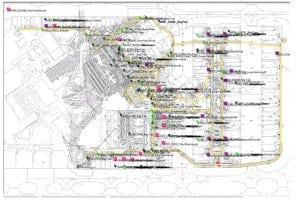
AiQ strives to produce tools and simulations that give maximum benefits to clients. Providing integrated, simple and effective analysis and simulations allows us to advise and present our clients with the information they need to run operational and cost effective airports.
In addition to all of the integrated operational Capacity Planning tools (Chk-in, MUP, Arrival, Stand Planning) offered by AiQ, we have now developed our own discrete Apron Vehicle simulation.
As part of TranvisionAiR, it gives the following benefits to clients:
